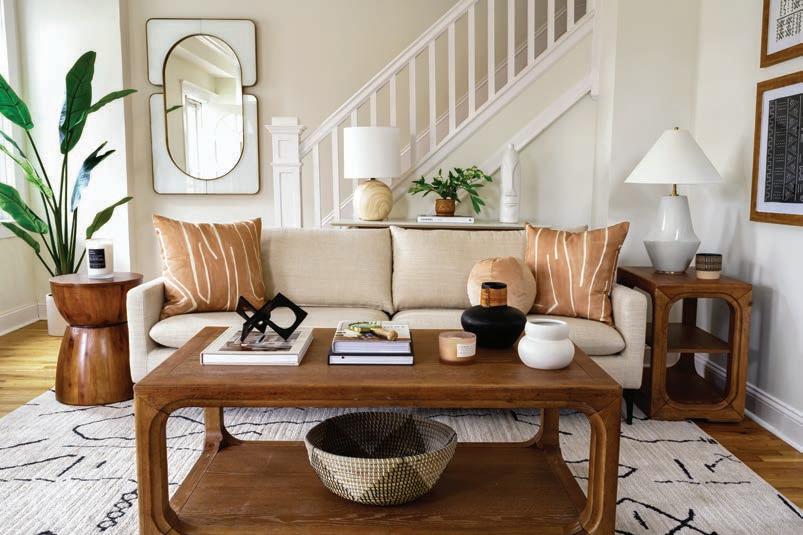
2 minute read
HOME DESIGN
BY ANGELA ROWE, DDCD Japandi Style Interior Design
HAVE YOU HEARD the new buzzword in interior design? Japandi! Japandi design is becoming immensely popular because it combines the simplicity of Japanese design and the comfort of Scandinavian design. Combine the two and you have Japandi design.
Advertisement
It is a blend of function and form, focusing on clean lines, calm light colors, and natural elements. The ultimate goal is to foster a feeling of tranquility and calmness while fusing comfort and quality.
You may have read the Scandinavian term hygge. What is hygge decor? It is a minimalistic interior design style, embodying the Danish concept of hygge: the feeling of being content while enjoying life's simple pleasures. Basically, the hygge concept for design is that your home should be your sanctuary and provide a feeling of comfort. It should calm your spirit and fill your soul.
The other term of creating Japandi is wabi-sabi which is a Japanese term that means finding beauty in imperfection. Wabi refers to living with humility and simplicity while being at one with nature, while sabi is defined as the ability to accept the lifecycle of anything as it is—flaws and all.
So, combining hygge and wabi-sabi creates Japandi. It incorporates a minimalism that is aesthetically pleasing while being functional and inviting. Japandi design integrates quality pieces over throw-away cheap pieces and utilizes neutral colors, bold textures, and natural materials. Natural materials such as unfinished woods or bamboo work well.
The color palette is calm with lighter tints and when color is

Japandi Style Interior Design

used it is used sparingly and with intention. Think tranquil and peaceful even Zen.
Another component to Japandi design is reducing clutter. This design aesthetic focuses on clean lines and open spaces. Since clean, open spaces are key, tiny chachkies displayed all over have no place in this type of design. For active homes a form of minimalism can be achieved by storing items in natural baskets, built-ins, or hidden behind a screen. Accessories should be planned with a purpose such as a jar that brings a pop of color or texture.
Another point of Japandi is sustainability. Use of “found” items such as Asian antiques, natural materials, and simple designs makes it a great green decor style. This design focuses on pieces that are sustainable and safe for our planet. With more consumers looking toward eco-friendly aesthetics, Japandi's popularity is no surprise.
The Japanese and Scandinavian design styles work so well together because they are both rooted in minimalism and comfort. The shared aesthetics of the two come together to create a style that is both easygoing and sophisticated. And where the two approaches diverge, their differences actually compliment each other. Where Japanese interiors are sleek, Nordic ones are rustic. The richer (but still neutral) colors of the Japanese design help to keep the stark, crisp palettes of the Scandinavian homes from felling clinical or cold.
The yin and yang of rustic versus sleek, rich versus stark, and crisp versus muted is what makes the Japandi style so versatile. With the modern lines of Scandinavian design and the sleek, functional elegance of Japanese design, Japandi is minimal yet welcoming. n


